black locust (Robinia pseudoacacia)
Fabaceae, the bean family
How to recognize black locust. The leaves of this tree are alternately arranged, pinnately compound, with elliptic thumb-sized leaflets.

Black locust is a tree with alternate, pinnately compound leaves.
On saplings and some lower branches of mature trees, the twigs are armed with paired spines (modified stipules).

Black locust has paired stipular spines.
Oooh this is interesting. This black locust leaf seen along a bike path in Worthington in mid-October 2023 is affected by the black locust leaf miner, Parectopa robiniella, a moth in the family Gracillariidae (Leaf Blotch Miner Moths). You can read abolut it on BugGuide HERE (link).
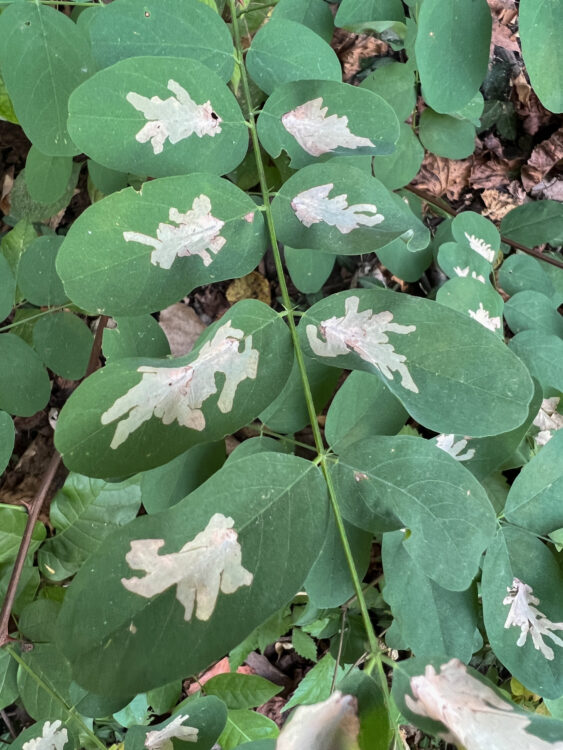
The black locust digitate leaf miner is a moth larva that tunnels inside the leaves.
Flowers and fruits. Black locust, in early May when in full bloom, is spectacular as it produces a massive display of white flowers on drooping racemes 10-20 cm long.

Black locust covered in blooms. May 19, 2006, Franklin County Ohio.
The flowers are typical representatives of the fabulous Fabaceae: bilaterally symmetrical with a large petal on top (the “banner”), two narrow ones on the side (the “wings”) and two narrow ones at the bottom that are fused at their tips, forming a “keel” that surrounds the stamens and pistil.
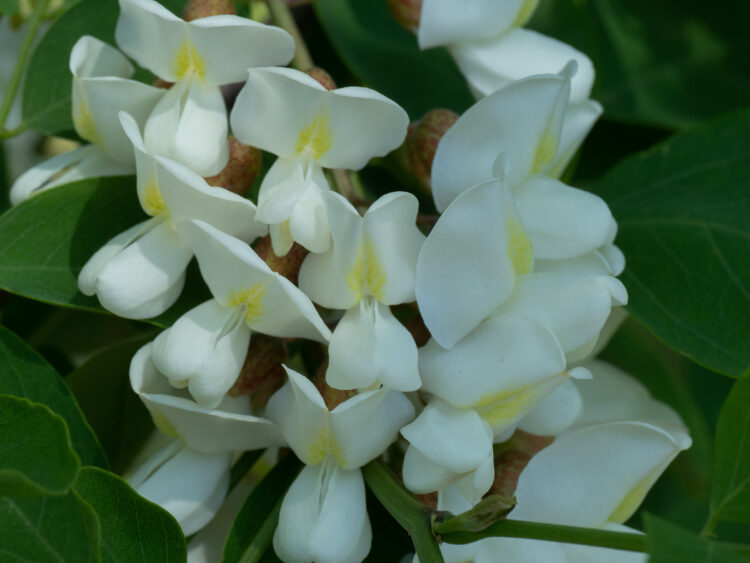
Black locust flowers are butterfly-like.
The fruits are thin dry legumes about as long as grocery store snow peas, but narrower (and poisonous).

Black locust fruits are blunt-tipped legumes.
In the winter. Black locust buds are hidden beneath the leaf scars. Some branches bear sharp stipular spines.
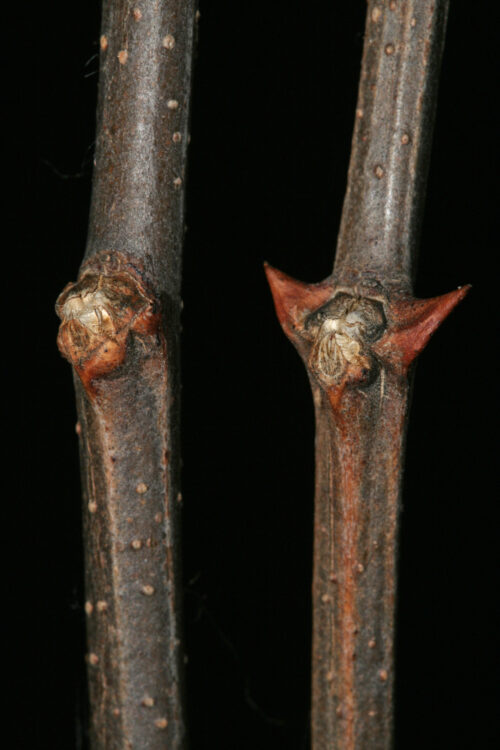
black locust twigs
Where to find black locust. E. Lucy Braun, in The Woody Plants of Ohio (1961, 1989; The Ohio State University Press) tell us that this species is a “Well known thorny tree, most abundant in waste places and on dry hillsides. The original range is doubtful, as this species has spread widely following settlement. It probably grew throughout the southern Appalachians, and ranged northward to the Ohio River and westward to Oklahoma; now naturalized northward into Quebec, Ontario and Iowa; planted and now naturalized in many countries. Found throughout Ohio although once limited to the southern part. Daniel Drake, in his Picture of Cincinnati in 1815, states that it was seldom seen more than 30 miles north of the Ohio River. Valuable for reforestation and erosion-control; as a timber, for fence-posts”.
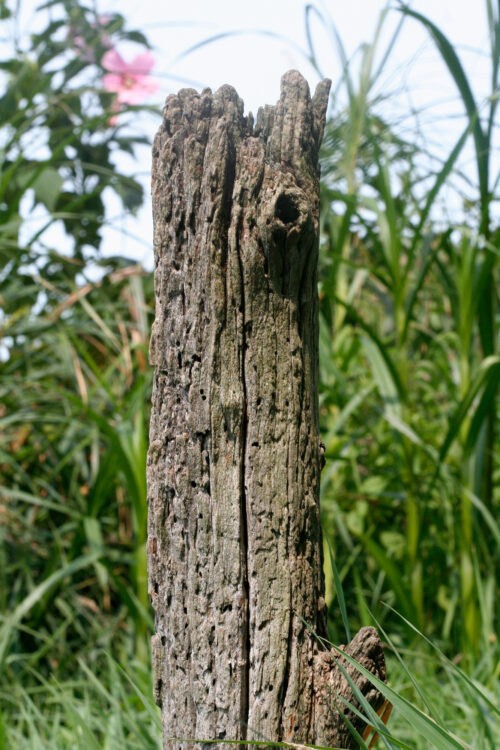
An old black locust fence post is weathered on the outside
but very solid within.
Scanned Image from an Old Book
(Flora of West Virginia, by P.D. Strausbaugh and Earl L. Core)
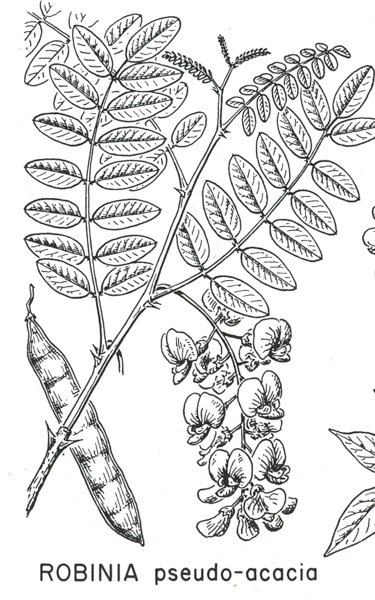
Ooh ooh. I have a question!
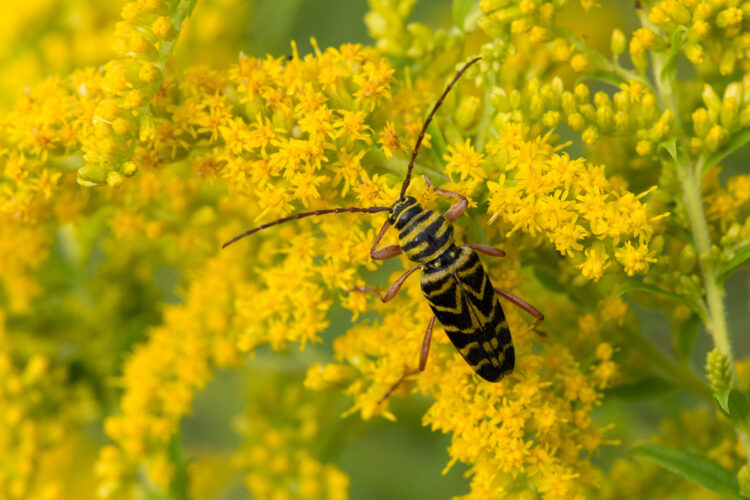
Black locust borer feeding on goldenrod.
September 9, 2014, meadow at Fawcett Center on OSU campus.
In September if you walk through a goldenrod field, you may be reminded of black locust. Why?
You are likely to see a pretty but somewhat destructive beetle, the black locust borer. The adults feed mainly on goldenrod pollen. In fall they mate and lay eggs in crevices of black locust bark, where newly emerged larvae hibernate. In spring they tunnel into the trees, weakening them and also making them especially susceptible to a specific wood-rotting bracket fungus.
